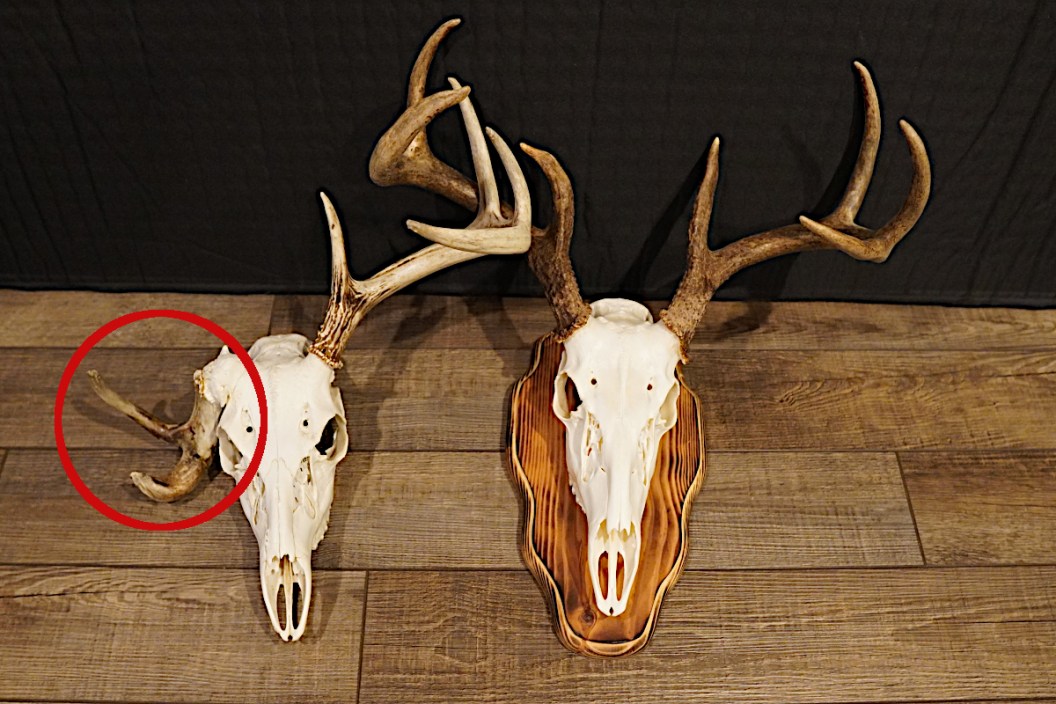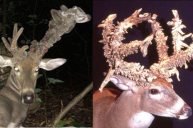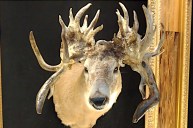Deer antlers are one of nature's wonders. No two antlers are the same; they are all unique, like a human fingerprint. You probably have heard a buck's antlers defined as typical vs. non-typical. For newer hunters, there may be some confusion about what that means. Not to worry, we are here to help with an in-depth explanation of how different sets of antlers are defined.
Deer hunters started paying more attention to these masses of bone on whitetails and mule deer. They developed scoring systems to better define a buck's rack and determine which was the biggest. Most of the definitions here fit mule deer, but most of the examples we are showing here are for whitetail deer. The rules are identical for both species for most record books like Boone and Crockett and Pope and Young.
Typical Deer
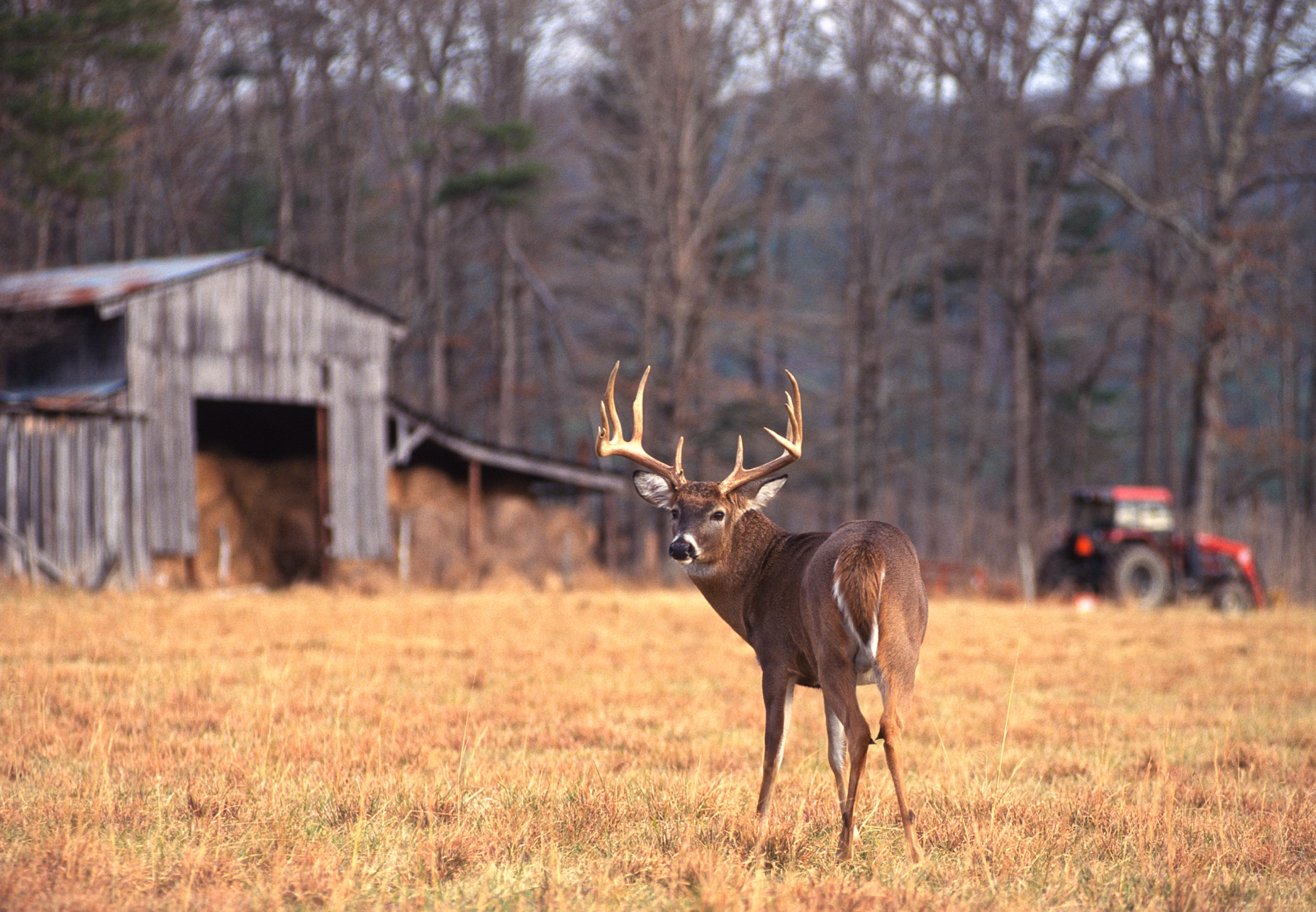
Getty Images: KeithSzafranski
We'll start with typical whitetails because these are the most common forms of antlers hunters are likely to encounter, hence the name. Your average deer will have main beams sweeping out and back in again. We'll cite Boone & Crockett's scoring instructions here since they are the rules most people follow when defining a big buck's antlers: "Normal points project from the top of the main beam. They are measured from the nearest edge of the main beam over outer curve to tip."
These projections must be at least one inch long to count as a point. Old-timers often define a point as "anything you can hang a ring on." Still, most scoring systems use the one-inch rule as a definition. Usually, typical points are evenly distributed across the main beam. Sometimes points look typical but may get ruled abnormal if two points are too close together and share a joint base. Read our piece on the Johnny King buck for more information on these grey areas.
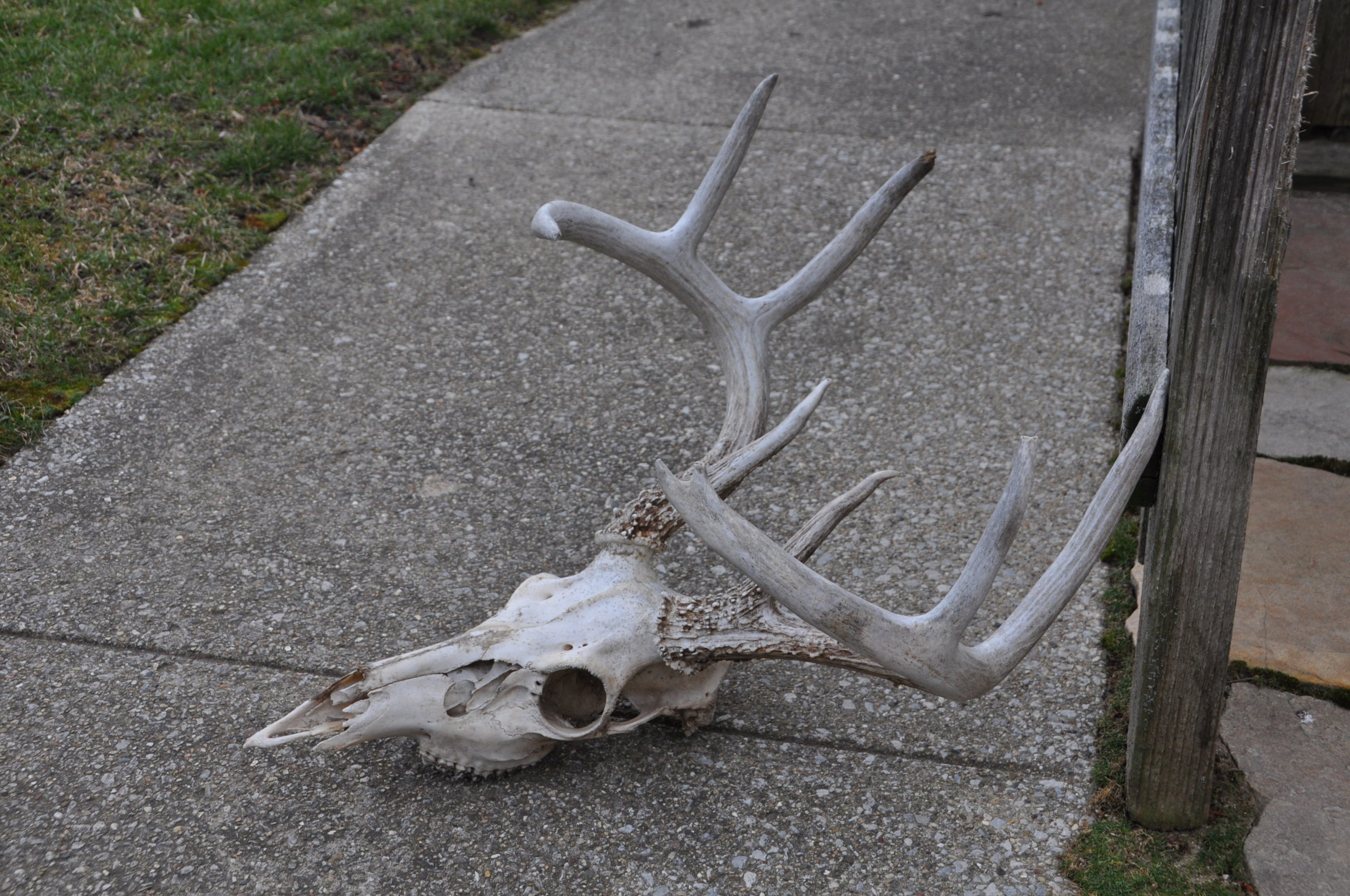
Travis Smola
In any case, the points nearest to the base of the antlers, directly above the eyes, are called the brow tines and are usually defined as G1s in most scoring systems. The next point further up the main beam is called the G2, then the G3, and so on. Bucks with G6 and G7 points are exceedingly rare. In most cases, whitetail bucks need at least a ten-point main frame to score high enough for the records. There are exceptions, of course, but a buck usually needs an exceptionally long beam length of over 24 inches to get in with fewer points. It is rare, but a few 8-point bucks have grown 170-inch frames (B&C's minimum entry score). Most of the top whitetails in the Boone & Crockett club top ten have at least a 12-point typical frame.
We should also briefly mention spread credit. Boone & Crockett counts the inside spread in the final score, defined as: "measured at a right angle to the center line of the skull at the widest point between main beams." Deer do not necessarily need a super-wide inside spread to qualify for the record book, but it sure helps.
Non-Typical Deer

Getty Images: JLFCapture
Thankfully, non-typical antlers are usually evident because bucks with many abnormal points are usually goofy-looking. You may even hear some hunters call them "ugly." Nature can do some bizarre things during the antler growth process. According to Boone & Crockett, an abnormal point is: "those non-typical in location (such as points originating from a point or bottom or sides of the main beam) or extra points beyond the usual pattern of points.
We should briefly mention that people usually consider split tines abnormal on whitetails. However, people typically deem those typical points because mule deer antlers are frequently forked. The difference between the scoring of a typical and a non-typical rack is that scorers add lengths of the abnormal points into the final net score. Most non-typical points consist of simple spits and kicker points.
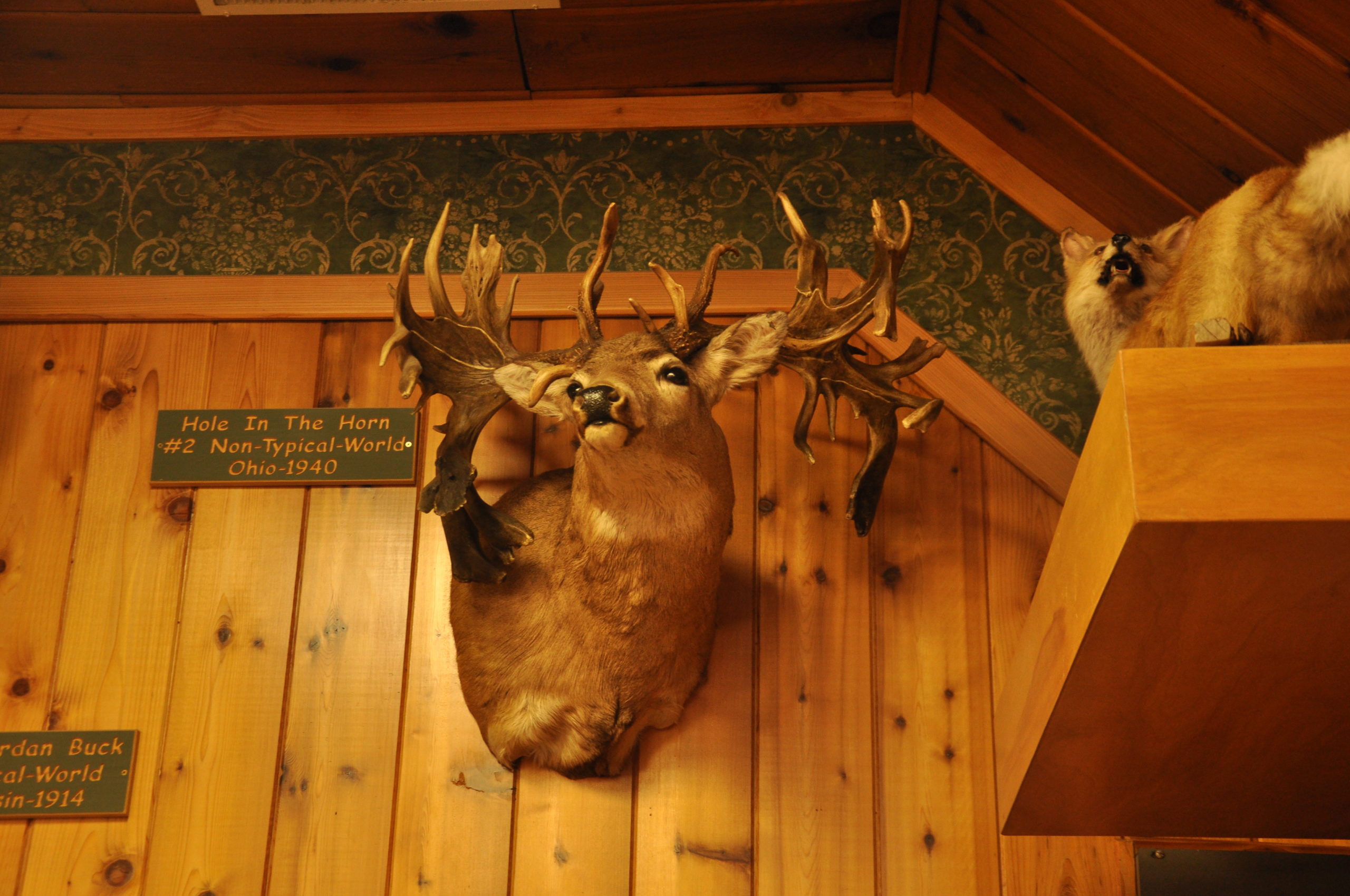
Travis Smola
Some of the more extreme non-typical bucks out there have a massive number of points totaling 20, 30, or more. Bucks like the "Missouri Monarch" and the "Hole-in-the-Horn" buck stunned the hunting world when people entered them in the big game record books with non-typical scores over 320 inches. Only a handful of whitetail deer has ever broken that 300-inch mark.
Occasionally, deer antlers can get so weird that major record-keeping organizations reject them outright as "unscorable." It usually happens only with the most extreme cases of non-typical antlers. Usually, on racks with so many points, it can take hours to count and measure them. It often seems to happen with the rare doe that grows antlers due to hormonal issues. These deer often do not lose their velvet and are classified as "cactus bucks" because their antlers are so abnormal.
How to Identify Bucks
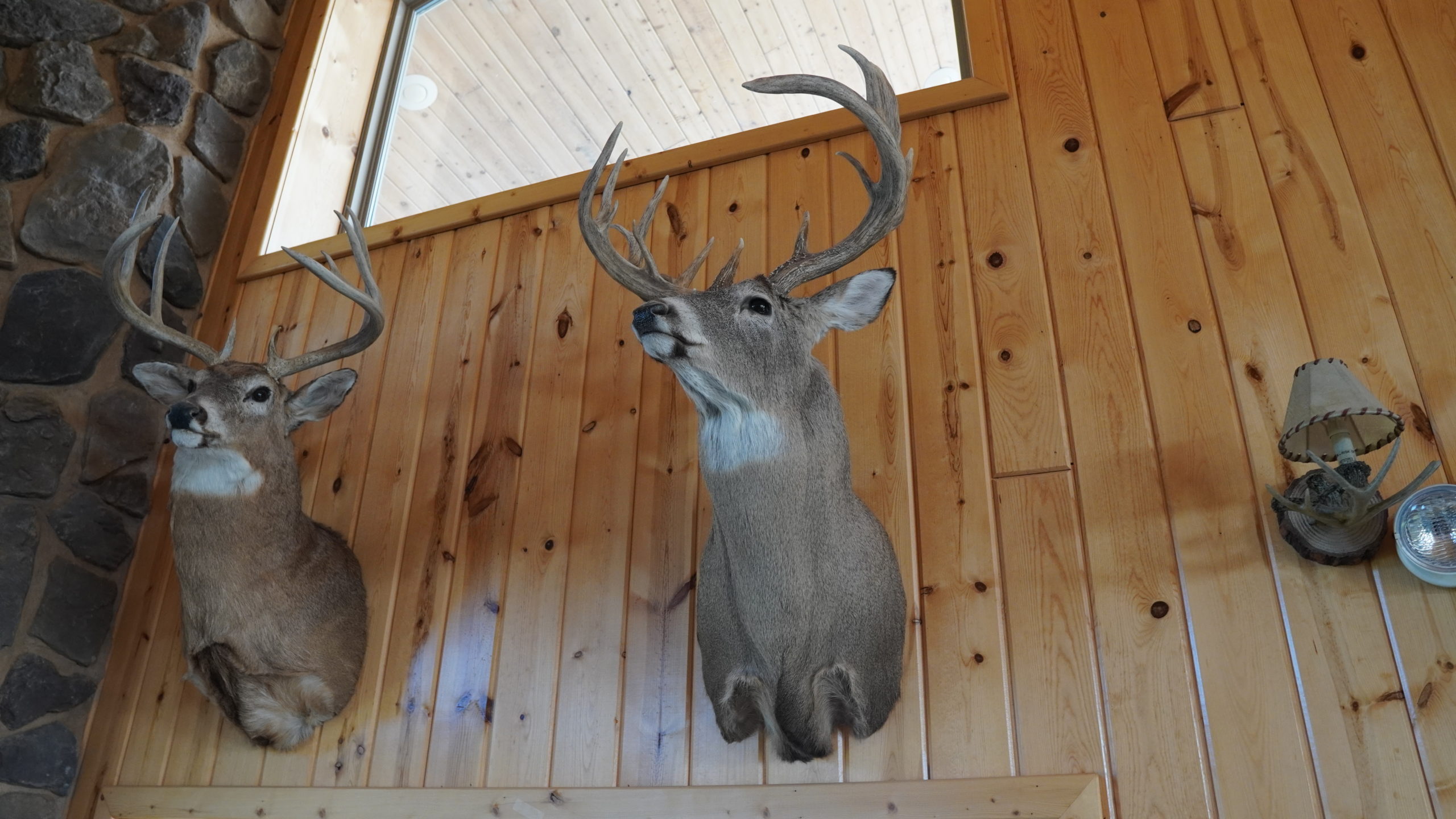
Travis Smola
Some non-typical bucks appear regular until you take a second look. Most deer will grow antlers with at least one or two abnormal points. I often see split G2s and split brow tines. Some of these features alone will not make a buck non-typical.
When the antlers have an excess number of non-typical points or the main beams are significantly distorted, most antlers start calling a deer non-typical. Remember, it's a typical deer if the antlers are primarily symmetrical and balanced. If the antlers are wild, uneven, or look radically different from side to side, it's probably a non-typical deer.
While non-typicals are not rare, they are slightly more uncommon than typical deer, which is why they are so prized by hunters. So, if you have the chance to see and harvest one, consider yourself lucky. Some hunters may prefer only typical antlers, but for us, beauty is in the eye of the beholder, and there is something to be said for a non-typical buck with many unique characteristics.
This article was originally published on December 8. 2021.
For more outdoor content from Travis Smola, follow him on Twitter and check out his Geocaching and Outdoors with Travis YouTube channels.
READ MORE: THE AXIS DEER AND HOW THEY'RE IMPACTING PARTS OF THE UNITED STATES
